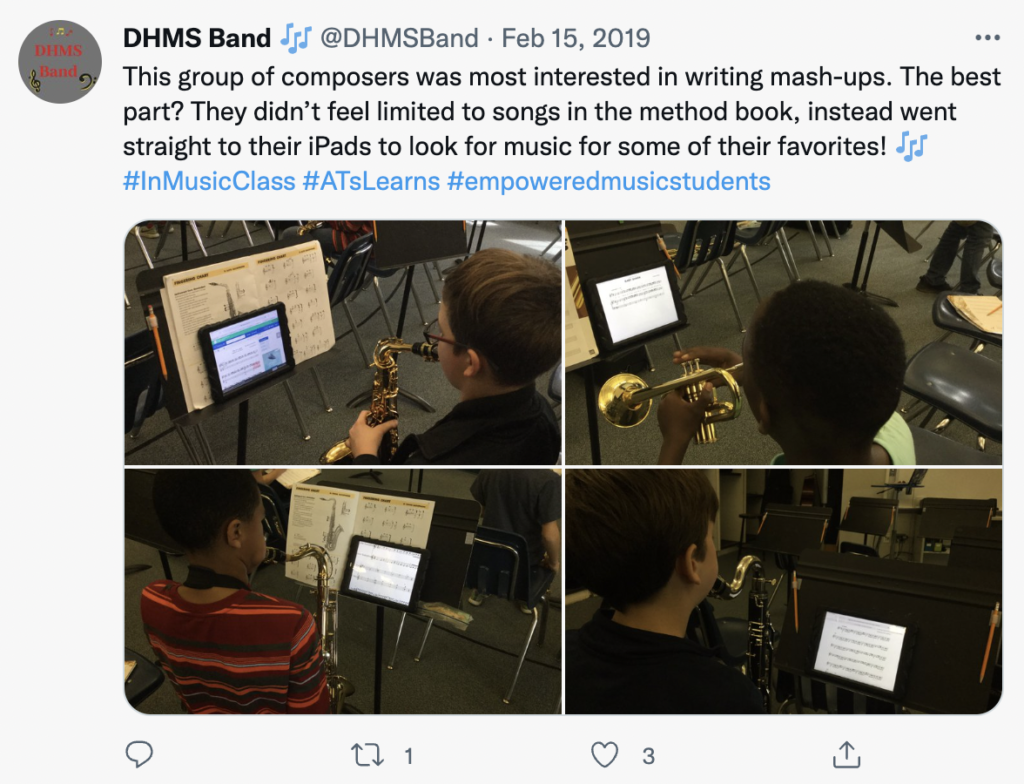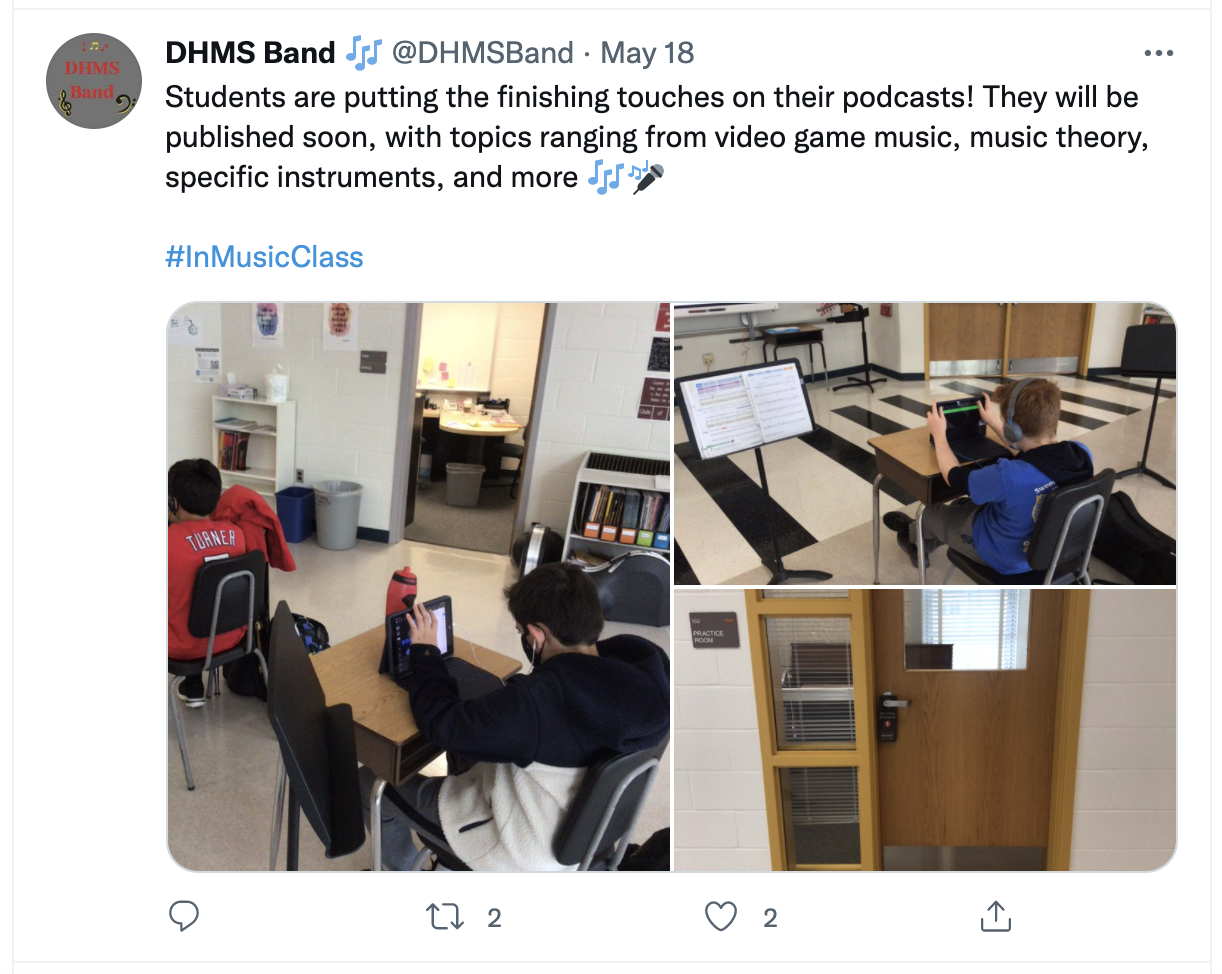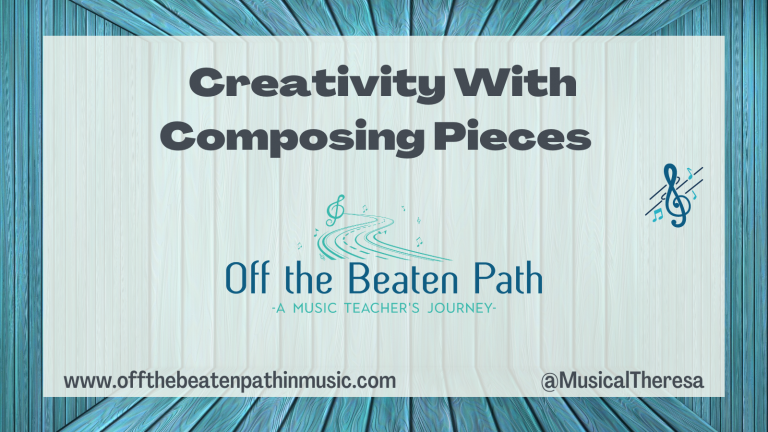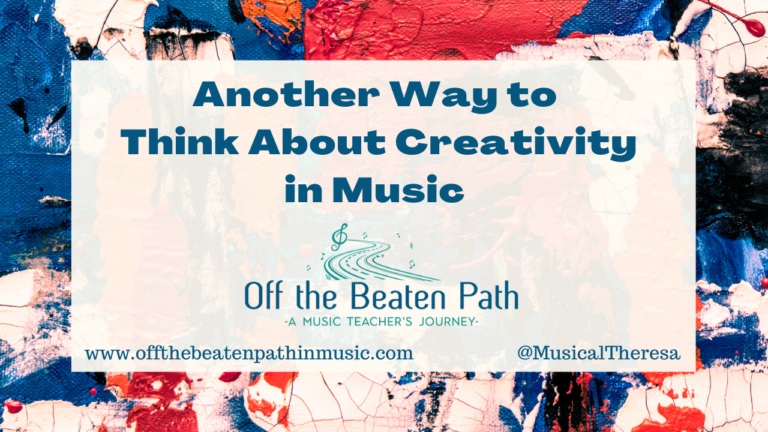Four Creative Activities for the End of the Year
We’ve reached the time of year when the questions appear on social media daily: “we just had our concert and there are three weeks left, what do I do?!?” Honestly, when I was in the classroom this was some of my favorite time! The concert is over, the performance pressures are gone, and now the only thing we have to do is make music. While there are many things you could do with this time, my suggestion is to incorporate student choice and musical creativity.

So often, especially when preparing for performances, we spend most of our time re-creating someone else’s music. The focus turns to the final product, and away from the music-making process. There is value in preparing for performances, but it’s not the only thing. Students must get the opportunity to make creative musical decision.
I’ve written about this topic before in Five Ideas to Try After a Concert and Five More Ideas to Try After a Concert, but figured it was time to add more, focusing on musical creativity and student choice. So whether you have one remaining class period or twenty, here are some creative activities you could do at the end of the year.
Improvisation Games
Sometimes we reserve improvisation for jazz ensembles, or elementary music classes, but it’s valuable for musicians of all ages and genres. While I’m a believer in using improvisation exercises from Day 1 in beginning band, I know some teachers aren’t as comfortable doing so. It’s okay! If you’re not sure where to start with improvisation, echoing is perfect.
Start by Echoing
Have students echo you playing or singing simple rhythm patterns that are four to eight beats long. Use pitches and rhythms that are familiar to the students. After you’ve done this several times, have students respond with something different that fits with in the same number of beats. So it’s like a musical conversation. Don’t worry if it sounds chaotic – it’s only a short amount of time! By having students all play or singing together, they are improvising safely. No one feels put on the spot and students can contribute something they feel comfortable with. Eventually, you can ask for volunteers to respond to you as a soloist, or act as the leader.
Echo games are a great introduction to improvisation. To make it even more fun, use a rhythmic track as an accompaniment. Not only does this make the activity more interesting, it acts as a metronome as well! You can find these on YouTube, or create your own with Groove Pizza or a digital audio workstation (DAW) like Soundtrap.
Musical Charades
Another fun improvisation game is musical charades, where students use their instruments or voices to musically portray a non-musical topic for classmates to guess. For this, you could use topic cards from an actual charades game, make your own cards, or crowd-source ideas by having students each submit 2-3 ideas. To play, one student or group of students chooses a card and has to use their instrument or singing voice to “act out” the topic on the card. You can decide any other rules, such as if students can use movements or if there is a time limit.
Musical Pictures
This last game I learned about from Marissa Guarriello during her interview for the Pass the Baton podcast. Marissa talked shared a game called “musical pictures”. Similar to charades, students use their instruments or singing voices to portray non-musical topics. First, decide on a category. Things like colors, animals, weather, or school subjects work well. Then, in small groups, students choose a specific topic within that category and must work together to create music to represent that topic. Finally, students present their creations to the class.
My students had a blast with this game! While the categories started simple enough, things really got interesting when they chose categories like, “the ocean” and “cheese.” You have to love middle school! Marissa and her co-authors, Sarah Gulish and Matt Shaffer, share more creative activities in their book, The Creative String Orchestra, published by F-flat Books.

Music Composition
I’ve said it before and I’ll say it again, music composition should occur in every music classroom! Music composition, the act of capturing original musical thoughts and ideas, is an important part of being a musician. Creating is even a strand in the 2014 Music Standards. Music composition activities don’t need to be complex, they don’t even need to include standard notation; popsicle sticks, play doh, or beat blocks will do the trick. You could also incorporate technology, using tools such as the Chrome Music Lab, Music Snippet, or Noteflight Learn.
As with anything new, start small, so it’s an experience your students will enjoy and find success doing. Consider having students compose a short melody using pitches and rhythms you have been working on in class. Or, provide a rhythm and have students use that to create a melody. Encourage students to play or sing what they write and make changes if desired. For bigger projects, peer feedback and opportunities for revision are key!
Another fun introduction to music composition is to have students “remix” a song – using a familiar melody, students can change pitches and rhythms to make it something new. Or have students create a mash-up composition, where they combine two or more existing melodies. Projects like these get students thinking creatively while removing the pressure of needing a completely original idea.

Here are a few other ideas for music composition at the end of the year:
- The Snowball Fight: A Music Composition Strategy – Students work together to create a musical composition.
- Transform a Composition Project from Teacher-led to Student-led – Have students compose for someone else to make the experience more authentic.
- Inspiring Creativity With the Chrome Music Lab – Using the Chrome Music Lab to have students create.
- Creating Music With Groove Pizza – Students can use Groove Pizza to create fun grooves while exploring rhythm and meter.
Student Choice Through Small Ensemble or Flex Music
For many instrumental ensembles, the pandemic introduced a wide variety of new flexible repertoire, perfect for smaller groups with imperfect instrumentation to perform. This music, and any small ensemble music, is also great for having students collaborate in their music making! In small groups, have students work together on this music. Students can assign parts, make musical decisions, and rehearse on their own. Maybe they can choose the pieces they work on! So often during rehearsal the conductor takes on those tasks – now it’s the students’ turn. After working on their pieces, students could share their music with the class in an informal performance.
Look for pieces that have 2-4 parts and are around the difficulty level students would sightread. Flex music works great for this, as do trios and quartets. For band students, here are two free resources to check out, 36 Chorales for Band by Aaron Cole and One Size Fits All Band Book.
Tap into Student Interests Through Podcasting
If you are looking for a larger project, or something that doesn’t include instruments, a student-created podcast may be just what you need! When creating a podcast, students research and share about a musical topic they are interested in. At the same time, they can learn about various audio recording and editing techniques, as well as create their own intro music and any sound effects. Students could record several episodes or just one. They could work independently or in small groups. There are endless options. I have found students enjoy being able to choose their own topics, and have fun with the artistic freedom throughout the process.


For more ideas on how you could incorporate a podcast project in your classroom, check out Podcasting in the Music Room. You can also access some free podcasting resources here: Podcast Project Resources.
Hopefully, these ideas have sparked some creativity in you as well, so you can now provide some creative opportunities for your students! I believe time spent on musical creativity is never wasted, but helps remind us what we love about music and that it’s supposed to be fun!







